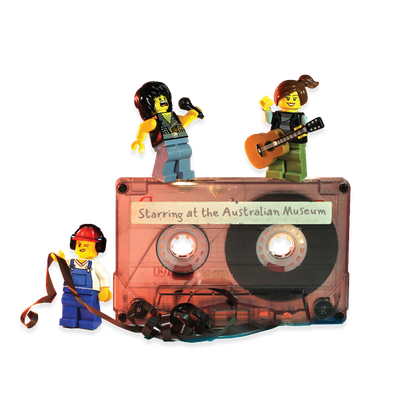Your search returned 109 results
By Page Type
By Tag
- All
- fish (966)
- blog (696)
- fishes of sydney harbour (401)
- First Nations (297)
- Blog (236)
- AMRI (169)
- archives (164)
- Eureka Prizes (146)
- Aboriginal and Torres Strait Islander (135)
- insect (126)
- Ichthyology (124)
- geoscience (109)
- minerals (102)
- climate change (99)
- podcast (94)
- Fish (91)
- Anthropology (89)
- International collections (80)
- Minerals Gallery (78)
- wildlife of sydney (78)
- Labridae (77)
- frog (74)
- gemstone (70)
- photography (65)
- history (63)
- Mollusca (60)
- gem (59)
- staff (59)
- Birds (56)
- Gems (56)
- Indonesia (56)
- education (55)
- shark (55)
- AMplify (54)
- people (53)
- earth sciences (50)
- exhibition (50)
- past exhibitions (50)
- Gobiidae (48)
- sustainability (46)
- Pomacentridae (45)
- Serranidae (44)
- lifelong learning (42)
- science (42)
- Earth and Environmental Science (41)
- Syngnathidae (41)
- Ancient Egypt (40)
- Bali (40)
- bird (40)
- dangerous australians (40)
-
Crystallography
https://australian.museum/learn/minerals/what-are-minerals/crystallography/Minerals can be identified by the shape of their crystals: called crystallography. External crystallography measures the outside properties of crystals such as length of crystal surfaces and the angles between these surfaces.
-
Tektites
https://australian.museum/learn/minerals/shaping-earth/tektites/Tektites are small, pebble-like glassy objects of Earth material that have been melted by meteorite impact, splashed up into our atmosphere, and fallen to Earth again under gravity.
-
Meteors and Meteorites
https://australian.museum/learn/minerals/shaping-earth/meteors-and-meteorites/Solid pieces of extraterrestrial debris (meteoroids) can stray from their orbits in outer space and be captured by Earth's gravity.
-
Classification of sedimentary rocks
https://australian.museum/learn/minerals/shaping-earth/classification-of-sedimentary-rocks/Sedimentary rocks are classified according to the predominant grain size present, as well as by their mineral content.
-
Azurite on Cerussite
https://australian.museum/learn/minerals/mineral-factsheets/azurite-on-cerussite/This beautiful specimen contains the largest Broken Hill azurite crystal in our collection.
-
Molybdenite on quartz
https://australian.museum/learn/minerals/mineral-factsheets/molybdenite-on-quartz/With its large, curved, silvery, flexible and metallic crystal flakes scattered over quartz crystals in an aesthetic arrangement, this is the best molybdenite (molybdenum sulphide) specimen of its type in the world.
-
Azurite with Cerussite
https://australian.museum/learn/minerals/mineral-factsheets/azurite-with-cerussite/This magnificent plate of dark blue azurite (copper hydroxy-carbonate) crystals from the oxidised zone of the Broken Hill orebody was acquired by Albert Chapman from a Broken Hill mine ‘trucker’ who ‘collected’ it in the 1950s.
-
Heulandite
https://australian.museum/learn/minerals/mineral-factsheets/Heulandite/This is an attractive group of lustrous, orange, diamond-shaped crystals arranged in radiating sheaves.
-
Smithsonite on Coronadite Stalactite
https://australian.museum/learn/minerals/mineral-factsheets/smithsonite/These small, sugary, white smithsonite crystals are encrusting branching stalactites of coronadite (lead, manganese oxide).
-
‘Welcome’ Gold Nugget Replica
https://australian.museum/learn/minerals/mineral-factsheets/welcome-gold-nugget-replica/The Australian Museum has a set of 43 gold nugget replicas, some acquired up to 135 years ago, representing every Australian state except South Australia, as well as New Zealand.
-
Discover more
2025 Australian Geographic Nature Photographer of the Year
Special exhibition
Free entry
Now open -
Discover more
Unfinished Business
Special exhibition
Free entry
Now open -
Discover more
Wansolmoana
Permanent exhibition
Free entry
Open daily -
Find out more
Burra
Permanent kids learning space
Free entry
10am - 4.30pm![]()
-
Discover more
Minerals
Permanent exhibition
Free entry
Open daily![]()




